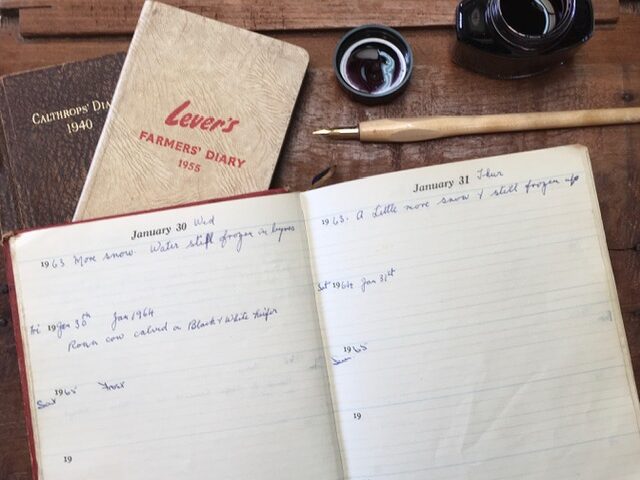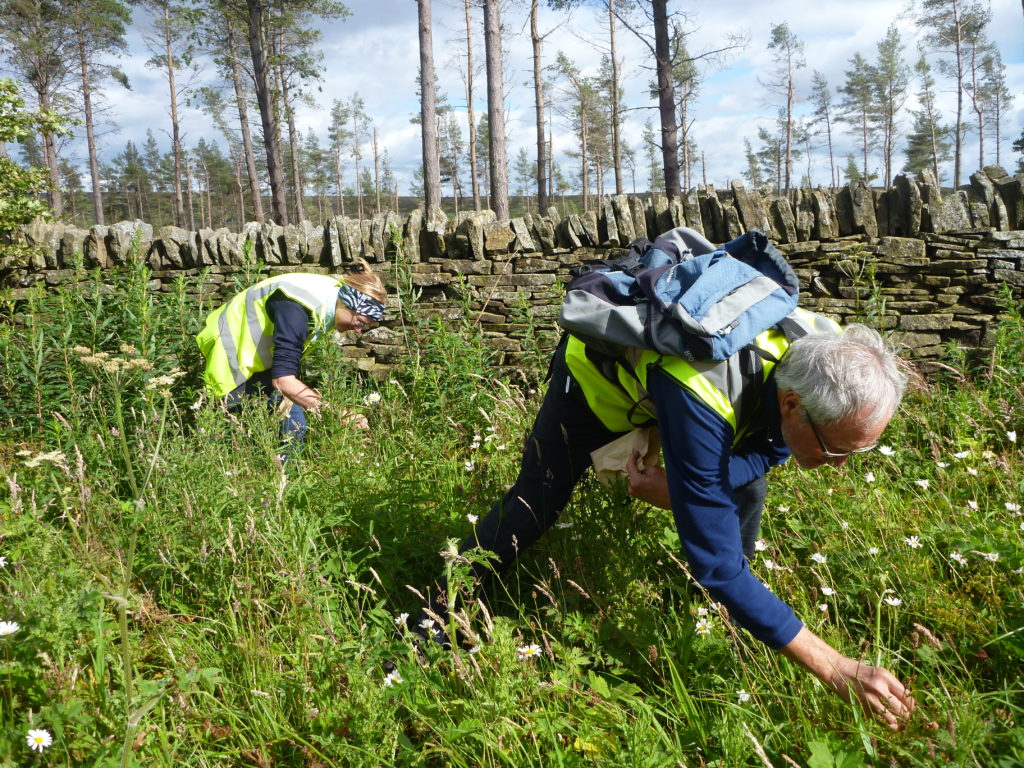What we do
Altogether Archaeology
2010 – 2015
The Altogether Archaeology project (largely funded by the Heritage Lottery Fund) brought together professional archaeologists and volunteers to focus research on the historic environment of the North Pennines. The project had three key aims: to undertake high-quality archaeological research to investigate the ways in which people have lived in the North Pennines over the past 10,000 years; to provide training for local people to undertake such work; and for all involved to have fun!
The project attracted nearly 600 volunteers, and numerous public events were held over a five-year period from 2010 – 2015. The project was awarded the 2014 Bowland Award as the best project in any AONB; just reward for the hard work undertaken by the volunteers.
Following completion of the project, the volunteers set up their own community group, also called Altogether Archaeology, to work with the AONB Partnership and other partners to continue the project’s aims. Further details about this group, including details of how to join can be found here – Altogether Archaeology. The Altogether Archaeology website also includes the reports from all fieldwork carried out during the North Pennines AONB Partnership project.
A further legacy of the Altogether Archaeology project is the North Pennines Virtual Museum which showcases a number of important archaeological finds from the area.
Highlights of the North Pennines AONB Partnership’s fieldwork through the Altogether Archaeology project include:
Cow Green Mesolithic campsite (Teesdale)
The excavation of a Mesolithic (Middle Stone Age, c7,000 BC) camp site resulted in the recovery of nearly a thousand pieces of artificially worked stone (chert and flint). The site, on a main route between Teesdale and the Eden Valley, may have been occupied seasonally over many years. Unfortunately, much of it had already eroded into the reservoir by the time of the excavation, but the results nevertheless represent an important contribution to our understanding of the lives of some of our earliest known ancestors in the North Pennines.
Long Meg (Little Salkeld, Eden Valley)
This magnificent Neolithic stone circle is linked to transport routes across the North Pennines, linking Cumbria with the north-east. Volunteers, in partnership with Durham University, completed a detailed topographic and geophysical survey of the stone circle and adjacent enclosure, followed by small-scale excavations that were featured on BBC Countryfile. Worked stone from Langdale and the Isle of Arran, and flint probably from Yorkshire, suggest the site was part of a network of ‘special places’ in about 3000BC, probably visited seasonally by people from far and wide. The results also demonstrate the huge potential for further work here.
Kirkhaugh grave (South Tynedale)
The excavation of the grave of an early metal worker from about 2400 BC, previously excavated in 1935, resulted in the discovery of several fascinating objects, including a very rare gold tress-ring (worn in the hair), the partner of one found in 1935. Extraordinarily, this was found by four schoolboys helping on the excavation, two of whom were great-great-grandchildren of the man who found the first one back in 1935. This project generated media interest around the world, and for awhile was the most popular story on the entire BBC News website.
Brackenber Bronze Age burial mound (Appleby Golf Course)
A circular mound on the golf course was thought to be a Roman signal station linked to the nearby road across Stainmore, but the Altogether Archaeology excavations proved it to be twice as old as the Romans. It is an early Bronze Age burial mound, dating from a little after 2000 BC. Find included pottery and flint tools. This reminds us that it can be dangerous to assume what a site is on the basis of surface features alone.
Epiacum molehill survey (Alston Moor)
The annual molehill survey within the Roman fort of Epiacum, as featured on Radio 4’s Today Programme, led to the discovery of hundreds of Roman objects. These will eventually be written up and published, helping to tell the tale of this important but relatively little known Roman fort, which is thought to have been the focus of Roman lead and silver mining in the North Pennines. (See www.epiacumheritage.org for further details)
St Botolph’s Chapel (Frosterley)
Excavation of a medieval chapel, itself of very great interest, also found a stone cross dating from the 8th century, proving that the village has much older origins than previously thought. This suggests that may other North Pennines villages may have similar secrets buried beneath them.
Muggleswick Grange (near Consett)
The investigation of areas around the spectacular standing ruins of this important medieval grange,which provided food, timber and other resources for the monastery at Durham,resulted in the discovery of extensive previously unknown buildings. The work also discovered remains of the medieval church, buried beneath the current church. This work was linked to a programme of conservation work to the standing ruins.
Westgate Castle (Weardale)
The Bishop of Durham’s medieval hunting lodge at Westgate, probably dating from about 1300, also functioned as the HQ for Stanhope Park and for lead mining operations in the surrounding hills. No sign of the building survived on the surface, but these excavations uncovered substantial buried remains. The walls were seven feet thick and of very high quality masonry; a remarkably well preserved spiral staircase was found built into the thickness of the wall at the castle’s South East corner.Although now reburied (conserving it would have been impossibly expensive) the remains survive for more detailed investigation in future, and the chance to see them was much appreciated by local people, so many of who came to the final open day that the presentations had to be repeated twice.
Killhope Buddle House
As part of work to conserve the Buddle House at Killhope Lead Mining Museum, volunteers undertook excavations in the floor. To everyone’s astonishment, the well-preserved remains of timber machinery, including three buddles (part of Killhope’s complex system of washing and sorting lead ore) were uncovered. Two were recorded and reburied in the floor, while one was carefully lifted for conservation and display.
Nenthead Mines survey (Alston Moor)
Volunteers completed an extensive survey of watercourses throughout the extensive site of Nenthead Mines, followed by small-scale carefully targeted excavations at key places. Water power was crucial to operations at Nenthead, but the watercourses are no longer maintained and damage from flowing water is causing serious erosion in some places. The results of the work are interesting in their own right, but also crucial to the future management of the Nenthead landscape.
Allen Valleys lidar landscapes survey
Working with Professor Stewart Ainsworth (well-known as the landscape archaeologist with Channel 4’s Time Team), volunteers used a specially designed methodology to examine lidarimages of more than 250 square kms of upland landscape around the Allen Valleys and Hexhamshire, resulting in the discovery of more than 1,000 previously undiscovered archaeological sites. These have all been accurately recorded, and the results will be invaluable to future landscape management as well as to future archaeological research.
Holwick landscape survey (Upper Teesdale)
The landscape around Holwick was recorded in great detail using lidar, air photography,documentary survey, and walk-over survey. In addition, several ancient settlement sites were surveyed in detail. The resulting report presents the fascinating story of the development of this beautiful area over thousands of years, and also provides a basis for much further fieldwork.











